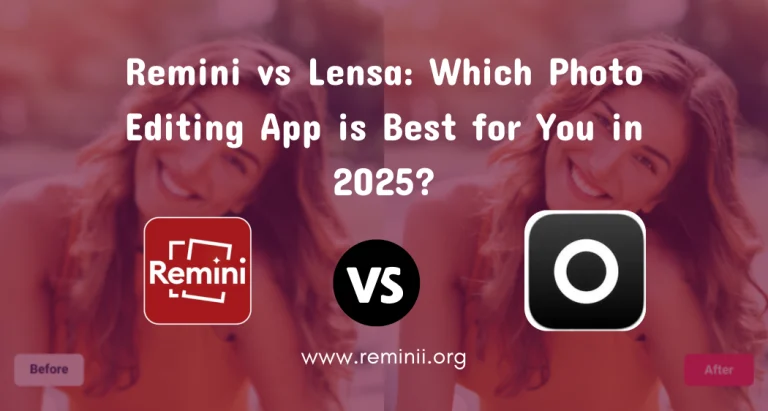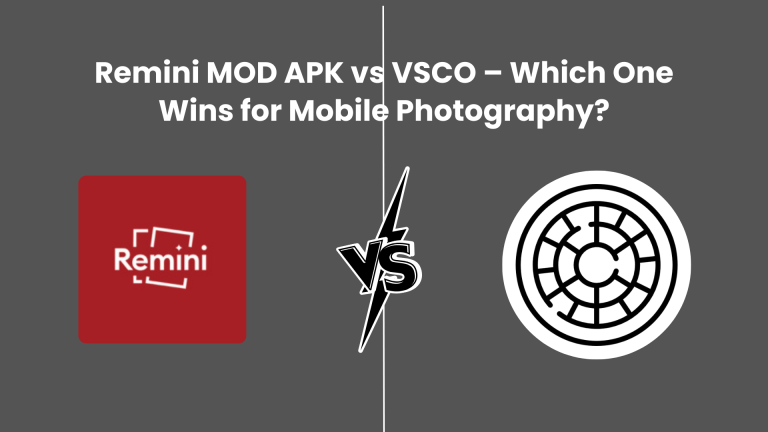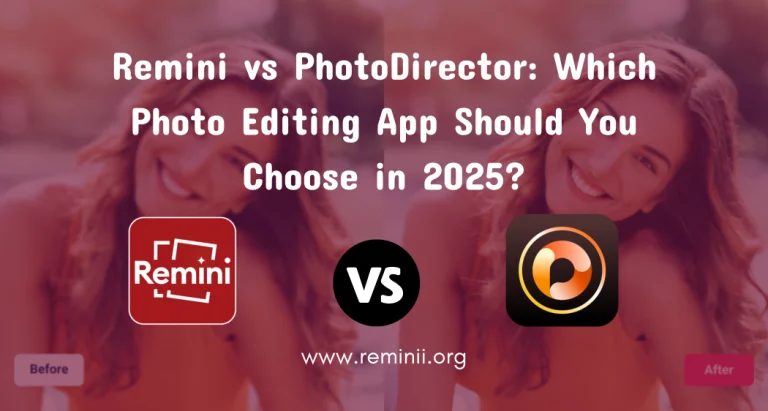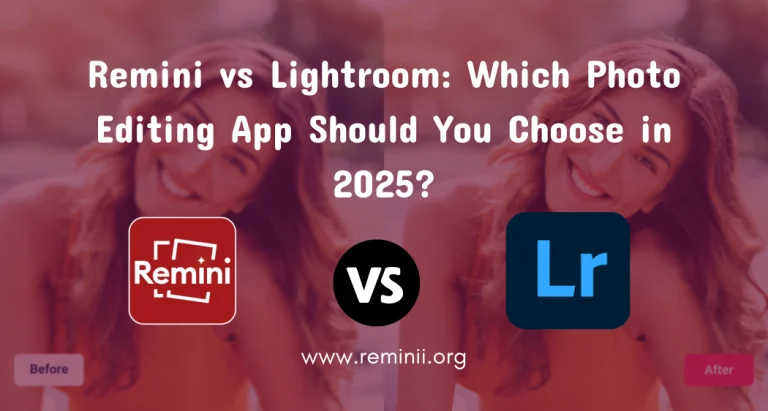Remini vs Facetune
In a world where every selfie, family snapshot, or throwback pic needs to shine on social media, photo editing apps have become essential. Whether you’re fixing blurry old photos from your grandma’s album or perfecting your glow-up for Instagram, tools like Remini and Facetune make it easy.
But with so many options out there, picking the right one can feel overwhelming. That’s why we’re diving deep into Remini vs Facetune in 2025 – two powerhouse AI-driven apps that promise stunning results but cater to slightly different vibes.
I’ve tested both apps hands-on (yes, I spent hours tweaking selfies and restoring vintage pics), scoured user reviews, and checked the latest updates to give you an honest, up-to-date breakdown.
We’ll cover features, pros and cons, pricing, installation tips, and more. By the end, you’ll know which one fits your style – whether you’re a casual user or a content creator chasing that pro-level polish. Let’s get into it!
What is Remini?
Remini is all about breathing new life into your photos and videos using cutting-edge AI. Launched by Bending Spoons, it’s exploded in popularity for its ability to turn grainy, low-res messes into crisp HD masterpieces.
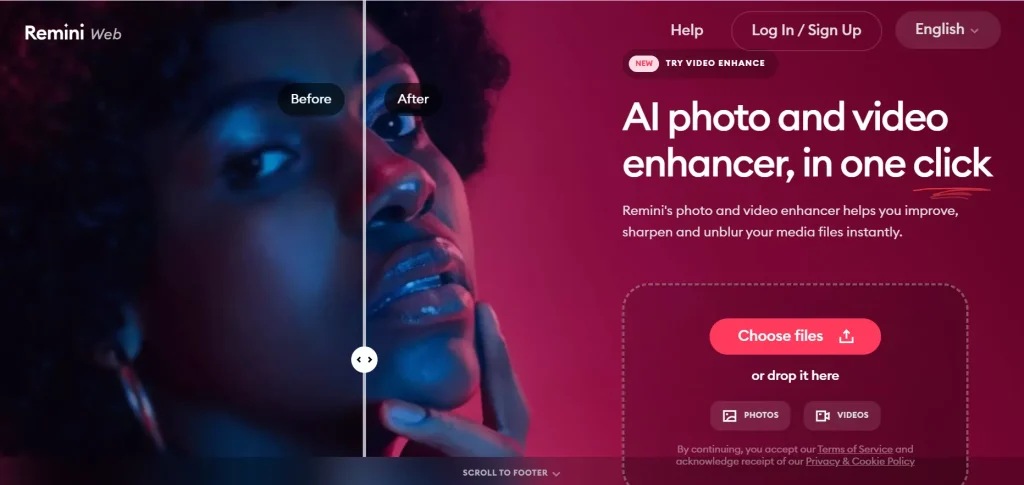
As of 2025, it’s ranked among the top photography apps globally, with over 100 million photos enhanced to date. It’s perfect for anyone digging through old family albums or fixing smartphone shots gone wrong.
Key highlights:
- Core Focus: AI-powered enhancement, especially for blurry, pixelated, or damaged images.
- Platforms: Available on iOS, Android, and web for seamless access across devices.
- Latest Updates in 2025: New AI Edits let you describe changes via text (e.g., “make the sky bluer”), plus improved performance for faster processing. Version 2.10.144 includes bug fixes and more control over enhancements like color and face tweaks.
If you’re into nostalgia or quick fixes for subpar shots, Remini feels like magic – but it’s not without its quirks, as we’ll see.
What is Facetune?
Facetune, from Lightricks, is the go-to for portrait perfection. It’s evolved from a simple selfie editor into a full-blown creative suite, with 295 million+ downloads and a 4.6-star rating across app stores. Think of it as your personal glam squad: it smooths skin, adds makeup, and even lets you try virtual haircuts.
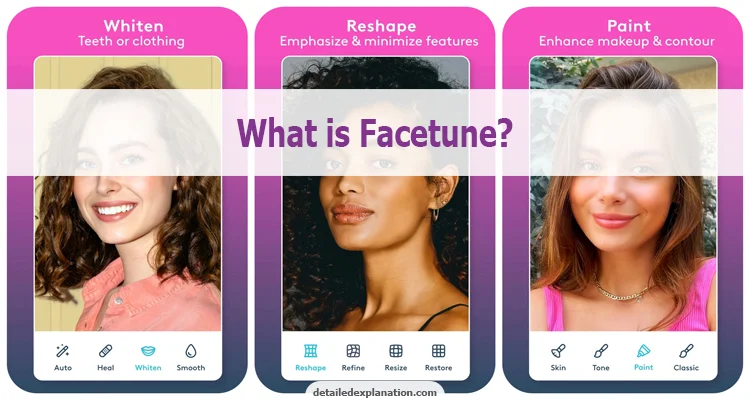
Key highlights:
- Core Focus: Beauty and creative edits for selfies, portraits, and videos.
- Platforms: iOS and Android (no native web version, but mobile-first design).
- Latest Updates in 2025: Fresh hair presets like Pixie and Shag, plus AI tools for wrinkle removal, object vanishing, and color analysis. Version 3.98 emphasizes natural results with manual controls.
Facetune shines for influencers and everyday users wanting that “just woke up like this” vibe – but with way more tools for fun experiments.
How to Install Remini and Facetune
Both apps are super straightforward to set up – no tech wizardry required. Here’s how to get started on your phone (since that’s where most editing happens):
Installing Remini:

- On iOS: Open the App Store, search “Remini – AI Photo Enhancer,” and tap “Get.” It’s free to download, but expect in-app purchases.
- On Android: Head to Google Play, search “Remini,” and hit “Install.”
- Web Version: Visit remini.ai, sign up, and upload photos directly – great for PC users.
- Pro Tip: Allow camera and storage permissions during setup for easy access to your gallery. As of 2025, it’s optimized for the latest iOS 18 and Android 15.
Installing Facetune:

- On iOS: App Store > Search “Facetune: Hair, Photo Editor” > “Get.”
- On Android: Google Play > Search “Facetune” > “Install.”
- Quick Start: Launch the app, grant photo access, and dive into the free trial for VIP features.
- Pro Tip: It’s renamed from Facetune2 in some stores – look for the Lightricks developer. Fully compatible with modern devices for smooth video editing.
Both install in under a minute and offer tutorials to get you editing right away. If you’re on a budget, start with the free versions to test the waters.
Features Comparison: Remini vs Facetune
Both apps leverage AI, but Remini leans into restoration while Facetune focuses on beauty and creativity. Here’s a side-by-side look:
| Feature | Remini | Facetune |
|---|---|---|
| AI Enhancement | Unblur, sharpen, restore old/damaged photos; video upscaling to HD. | Skin smoothing, blemish removal, reshape face/body; AI headshots and avatars. |
| Portrait Tools | Face glow, auto color fix; text-based edits (new in 2025). | Makeup (lipstick, eyeliner), teeth whitening, hair color/styles; wrinkle remover. |
| Creative Edits | Background enhance, batch processing (Pro only). | Background change/blur, relight, object removal; collages and filters. |
| Video Editing | Enhance clarity, reduce noise; limited to 60s clips in free. | Full retouch, filters; up to 5-minute videos with natural results. |
| Unique Perks | Offline mode for basic edits; generates AI photos from descriptions. | AI stylist for outfit/hair suggestions; passport photo maker. |
| Batch Editing | Yes (Pro); great for albums. | Limited; more one-by-one focus. |
From my tests, Remini’s AI feels more “hands-off” – tap once, and it’s done. Facetune gives you sliders for fine-tuning, which pros love but beginners might find fiddly.
“While Remini excels at photo restoration and Facetune shines for beauty edits, neither focuses heavily on graphic design. If you’re looking to create social media posts, flyers, or branded visuals, Canva might be your go-to. Check out our detailed Remini vs Canva comparison to see how it stacks up for creative projects.”
Pros and Cons: Remini vs Facetune
No app is perfect. Based on 2025 user reviews (from Trustpilot, Reddit, and app stores averaging 4.6 stars each), here’s the real talk:
Remini Pros and Cons
Pros:
- Lightning-fast for restoring blurry/old photos – users rave about “magical” results on vintage pics.
- Natural enhancements without overdoing it; supports multiple languages.
- Affordable entry with free tier; works offline for quick tweaks.
- Batch editing saves time for bulk fixes.
Cons:
- Can sometimes distort faces (e.g., eyes or lips) on very low-res images – X users complain it “changes features.”
- Ads in free version; Pro is pricey at $9/week.
- Limited creative tools compared to full editors like Photoshop.
- Video limits (e.g., 60s) frustrate some.
Facetune Pros and Cons
Pros:
- Endless creative options – virtual makeup and hair changes are a blast for experimenting.
- Natural, pro-level results; great for influencers with consistent aesthetics.
- Video editing feels seamless; AI tools like object removal are game-changers.
- 7-day free trial lets you try VIP features risk-free.
Cons:
- Overwhelming interface for newbies – too many tools can confuse.
- Paid features locked behind VIP; subscriptions add up ($5.99/month).
- No strong focus on restoration; better for fresh portraits than old scans.
- Some users report billing issues post-trial.
Overall, Remini wins for quick fixes and restoration, while Facetune dominates beauty and video creativity.
Pricing Breakdown: Which is More Affordable?
Both follow freemium models, but subscriptions unlock the good stuff. Prices as of August 2025 (check apps for regional variations):
| Plan | Remini | Facetune |
|---|---|---|
| Free | Basic enhancements; ads; limited credits (e.g., 5 photos/day). | Core tools like smoothing; watermarks on saves. |
| Pro/VIP Monthly | $9.99 (unlimited photos, no ads). | $5.99 (full access, no limits). |
| Yearly | $49.99 (save ~58%). | $35.99 (save ~50%). |
| Lifetime | N/A | $69.99 (one-time buy). |
| Trial | 7 days free on Pro. | 7 days free on VIP. |
Remini feels pricier for heavy users, but its web access adds value. Facetune’s lifetime option is a steal if you’re committed.
User Reviews and Real-World Experiences in 2025
From X (formerly Twitter) and forums, users love Remini’s restoration but warn against over-reliance – “it auto-generates features,” one said. Facetune gets praise for natural edits: “Makes photos look so real!” But some call it “scammy” for trial charges.
In my experience, Remini nailed a 1980s family photo, making it HD without weird artifacts. Facetune transformed a selfie with virtual blush – fun, but I had to tweak to avoid looking “filtered.”
Which One Should You Choose?
- Pick Remini if: You want effortless restoration for old/blurry photos/videos, batch editing, or offline use. Ideal for family historians or casual upscalers.
- Pick Facetune if: You’re into beauty tweaks, creative fun (like hair trials), or video retouching. Perfect for influencers, daters, or anyone obsessed with portraits.
- Both? If budget allows – Remini for fixes, Facetune for flair.
Ultimately, try the free versions first. Your needs (restoration vs. beauty) will decide the winner.
Conclusion
Remini and Facetune are both top-tier in 2025, but Remini edges out for pure AI enhancement magic, especially with its text edits and web support. Facetune, though, offers more uniqueness for creative souls. Whichever you choose, these apps make editing accessible and fun – no pro skills needed. Download one today, play around, and watch your photos level up. Got questions? Drop them in the comments!
FAQs
Can I use Remini and Facetune for both photos and videos?
Yes! Remini enhances video quality (up to HD), while Facetune adds retouch and filters to clips.
What makes Remini and Facetune special in 2025?
Remini’s AI restoration is unmatched for old pics; Facetune’s creative AI (like hair simulators) sets it apart for portraits.
Can Remini be used offline?
Yes, for basic edits – a big plus over many apps.
Does Remini offer batch editing?
Absolutely, in the Pro version – process multiple photos at once.
Are there free alternatives?
For basics, try built-in phone editors or apps like Snapseed. But for AI power, these two lead the pack.
